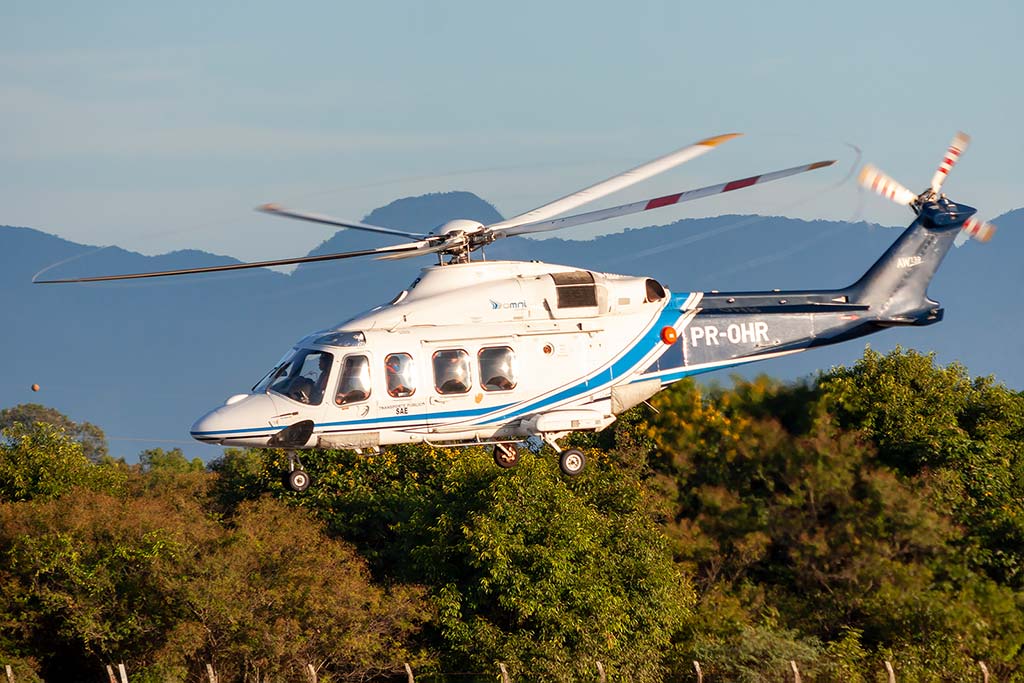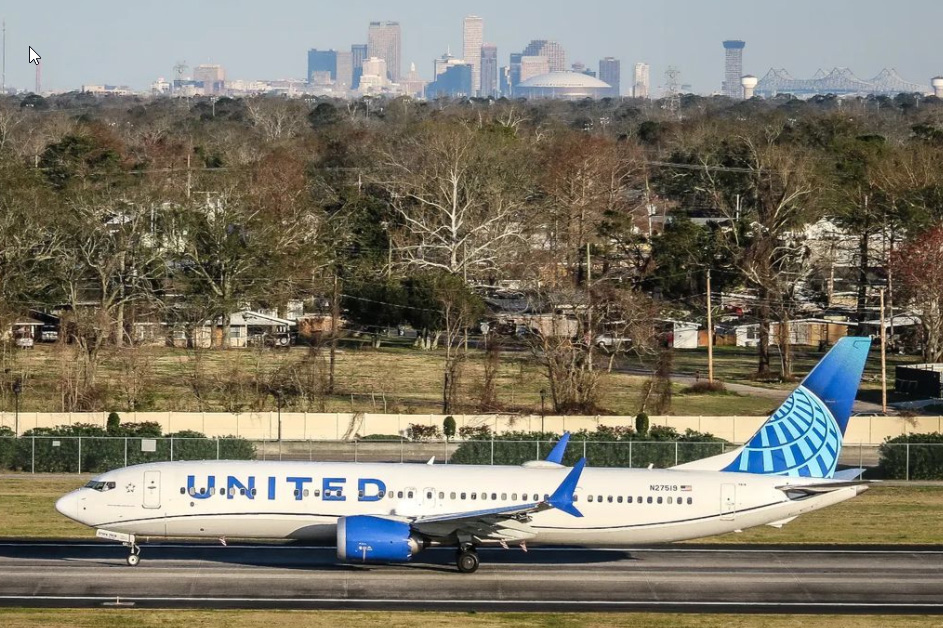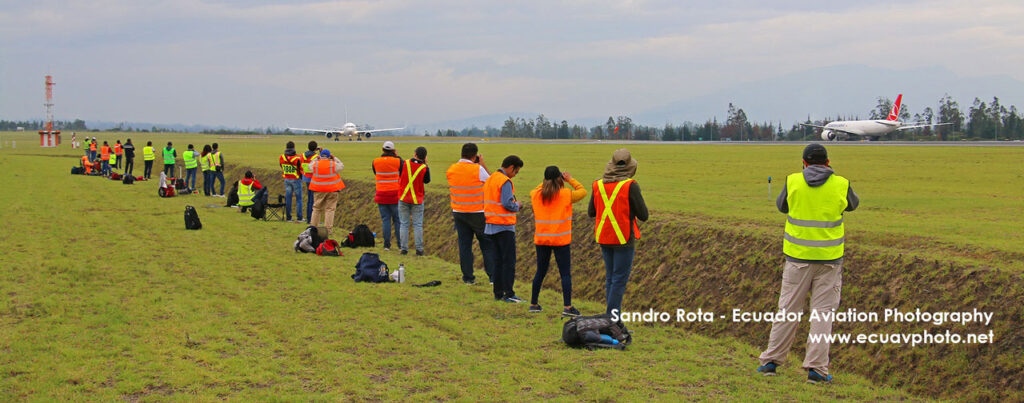UIO-Spot1

Macaé Airport – Spotting Guide
March 29, 2022
New Orleans Intl. Airport – Spotting Guide
April 20, 2022
Macaé Airport – Spotting Guide
March 29, 2022
New Orleans Intl. Airport – Spotting Guide
April 20, 2022Quito Mariscal Sucre Intl. Airport – Spotting Guide

The new Mariscal Sucre airport (UIO/SEQM) is located in a mesa at an elevation of 2,400 meters (7900ft). It features a 4100-meter-long runway with orientation 36/18, passenger terminal, cargo terminal and FBO. Quito’s main traffic consists of both national and international passenger flights. Quito connects the main cities in the country as well as international destinations include Bogota, Lima, San Salvador, Mexico City, Santiago de Chile, Panama City, Miami, Houston, Dallas, Fort Lauderdale, Atlanta, Amsterdam and Madrid.
Besides the regular passenger destinations, Quito moves tons of cargo yearly. Among Ecuador’s top exports are roses, whose farms are not far from the airport, making it a strategic location. Cargolux, KLM Cargo / Martinair Cargo, Tampa / Avianca Cargo, Emirates Sky Cargo, Qatar Cargo, Atlas Air Cargo, Latam Cargo and its subsidiaries, DHL, LAS, Aerosucre and other cargo Airlines are regular visitors at Quito’s airport. The peak season to see cargo flights are in late January and early February before Valentine’s Day and in May before Mother’s Day.
General aviation, military and government flights can be seen at Quito: There are some private planes based in Quito, but most are visitors from other cities. Though the military platform has not yet been built, flights from the Ecuadorian air force, army, and navy can be seen from time to time. On weekdays, the government oil company flies constantly to different destinations in the jungle and Esmeraldas in the coast.
Quito is a magical destination located in a valley in the Andes mountains at an elevation of 2,800 meters above sea level. It is a city surrounded by various volcanoes, and is home to one of the oldest and best kept colonial cities in South America which is why it is an UNESCO world heritage site. The Equator is located only a few kilometers north.
Due to the topography and climate, flying to this city meant a real challenge back in the day. In the 1920’s, Quito’s airport was an improvised landing strip in what back then was barren farmland. In the 1940’s a new airfield was built further north, and as decades went by it was expanded numerous times to accommodate the bigger and more modern planes, including heavy jets. Along with the airport, the city grew around it, and with the nearby mountains and edifications, the airport became too small and very limited for its elevation. A solution to this limited and challenging airport needed to be built, and in the 1970’s a new location was chosen in a lower, wider valley a few kilometers east. However, it wasn’t until the 2000s when the construction of the new Mariscal Sucre International Airport began and finally in February 2013, it began its operations.
Spotting locations within the airport’s mesa can be found along the western perimeter fence. The main highway comes from the south and at a point joins the perimeter fence and follows all the way through to the terminal. On that route you pass by the private hangars, cargo terminals, and finally the passenger terminal. In a straight line from the airport, these spotting locations are not far. However, the infrastructure is limited and getting to the other side of the cliffs takes time as there are no bridges and one must take the main roads that go the long way around. Depending on the location you wish to go to, from the airport terminal to said locations you have about 15 minutes of highway driving and about 20 minutes through stone / dirt roads. The roads follow the irregular terrain, so they can be confusing and one can easily get lost.
When spotting in Quito please keep in mind:
- Quito is a high-altitude airport. Altitude can affect your body especially if you are moving around. Your body must adapt to the altitude, which is why we recommend moving slowly and not engaging in big efforts for the first 24 – 48 hours after arrival in Quito.
- Depending on your age, physical condition and other factors you may feel tired, lack of air, headaches, nosebleed, increase in heartrate, blood pressure, etc. If you feel any of these symptoms try to sit down and relax. If you feel bad after a few days go see a doctor.
- You are in the equator at a high elevation. The sun and its UV rays can be very strong. Be sure to always wear sunscreen, use a hat and sunglasses to avoid severe sunburns.
- Keep hydrated. The altitude, dry air, and strong sun rays can wear you out. When spotting keep hydrated to avoid dehydration and heatstroke.
- Please note that the fence is not very “camera-friendly”. The fence is vertical and you only have about 5cm between bars.
- Spotting from the locations can be a tricky task for many reasons. Unlike most airports, the terrain has a lot of irregularities and differences in elevations which in some points are above the perimeter fence, and in other cases, below. Because of this, the best and most common location among spotters is along the perimeter fence near the beginning of runway 36. As mentioned previously, Quito’s new Mariscal Sucre airport is located on a mesa down in a valley, and is surrounded by deep cliffs. This particular topography limits the amount of spotting locations outside the airport perimeter. The airport perimeter covers most of the mesa, and some of the locations are located at the other side of the cliffs.
- To get in touch with local spotters please contact the Ecuador Aviation Group on Facebook, Twitter or on their website
Written by Sandro Rota. Last Update: March 2022.
| Rating | |
| Movements | |
| Airline Variety | |
| Photo Locations | |
| Weather | |
| Airport Information | |
| Runways | |
| 18/36 | 4.100 m (13.451 ft) Pavement |
| Terminals | There is one terminal handling all flights. |
| Spotting Information | |
| Ladder | Not needed at any of the locations |
| Car/Public Transport | Public transportation is not the best and not recommended for foreigners for security reasons. Only spot 2 is in walking distance from the terminal. |
| Drinks/Food/Restrooms | There are snack bars next to spot 2 at the gas station and directly at spot 3. |
| Hotels | There is a Wyndham directly at the terminal. Because the rooms are facing westwards it is impossible to see the airport. |
| Season | Given that Quito lies directly on the equator, the amount of sunlight varies very little throughout the year. The basic rule is: From sunrise up to 11:00 you will have good light. From 11:30 – 13:00 sunlight will be too vertical and prone to lots of shadows. We recommend avoiding this type of light as it doesn’t bring the best results. From 13:00 – 18:00 you will have nice afternoon light. |
| Security | Unlike Europe or other countries in the northern hemisphere, plane spotting is not a common activity in Latin America. This is why for many years, spotting in Ecuador was associated to espionage, criminal activity, and even terrorism. Part of this was because Ecuador had a border conflict with Peru, so for many years if you were seen with a camera near an airport, you were thought to be a spy and would have a hard time explaining why you were taking photos.
Both civil and military aviation authorities in Ecuador finally understood the role plane spotters play in the aviation community and in a matter of years became more relaxed and began seeing plane spotting for what it really was. Not only was spotting allowed, it was in some cases encouraged and spotter’s photos were published on different social media and websites. As a result, plane spotting is now more common than it was a decade ago. Crime is a big issue in Latin America and Ecuador is no exception. Though Quito is a fairly peaceful city, the social and political panorama has deteriorated especially after the pandemic. Foreigners tend to stand out among locals and can be seen as targets to robbers especially if you have your photographic equipment visible. Try not to have your equipment exposed much, and if you do, be always on the lookout for suspicious people. Not everyone knows why we take photos. You may bump into locals who might ask who you are and what you are doing. Once the ice is broken locals tend to be friendly. Though the airport authorities in Quito allow spotting, spotting from the fence can be complicated especially if you are with a vehicle. The highway is constantly patrolled by a private security company with guards on motorcycles. Basically, they don’t want people parking on the highway, so if you are parked on the road, they will ask you to leave. If you are at the fence without any vehicles, it will depend on the guard if they let you stay or not. In summary, plane spotting in civil airports in Ecuador in theory is allowed, however, one can eventually bump into some people who “didn’t get the memo” and will give you a hard time. |
| Runway Usage | |
| 18/36 | Used in both directions |
| Spot #1 – Soccer Field/Strawberry Fields | |
|---|---|
| WHERE | There is a soccer field in Otón de Vélez, located at the eastern side of the airport. Far and confusing to get to, especially if you don’t have a vehicle. Though there are busses that pass near this location, public transportation is not the best and not recommended for foreigners for security reasons. If there are matches going on you can move southwards to the strawberry plantations, about 100 meters south from the soccer field. The landmark is a big cellular phone antenna painted red and white. The soccer field angle is better as it is more discreet, and more comfortable. However, if the angle gets complicated there is a good second choice. |
| WHAT | Wonderful backdrop of the mountains and city from afar. Great view of the terminal. – Excellent for take-offs from runway 36, some landings in runway 36. – Ok for landings and takeoffs on runway 18. |
| TIME | Good light is usually from 06:30 – 11:00. |
| MISC. | Normally very peaceful, quiet, and safe, especially on weekdays (when there are no soccer matches). Some days they play soccer and you might get in their way. Neighbors may get suspicious and / or may ask you for money for being there. No toilets nearby (but lots of plants / bushes / trees). It is best to avoid going to this location on your own. Try to contact someone local before and coordinate a visit with them. |
| FOCAL LENGTH | Air Europa A333=250mm; 722=220mm; 747=210mm; 738=370mm |
| Spot #2 – Perimeter Fence | |
|---|---|
| WHERE | Perimeter fence in runway 36. Recommendations: There are some cement bases the sidewalk between lanes. These bases provide about 20 – 30 cm more height which help you clear the fence when taking photos. If you have a vehicle, it would be best to leave it parked at the gasoline station which is about 600 meters north. Otherwise, parking on the road will get you into trouble. |
| WHAT | Wonderful backdrop of the eastern mountain ridge and “Puntas” volcano. On some seasons you get rainbows on the mountains. – Excellent for approaches and landings on runway 36. – OK for planes taxiing into the runway, though the fence can get in the way |
| TIME | Good light is usually from 13:00 to 17:45. |
| MISC. | You may be hassled by private security guards and be asked to leave. It can be dangerous to be standing on the side of the highway. |
| FOCAL LENGTH | 767=100mm; A320=140mm |
| Spot #3 – Tabacarcen Parking Lot | |
|---|---|
| WHERE | Tabacarcen / Customs parking lot. Tabacarcen is a logistics facility where the customs (SENAE – Aduana) building is located. This lies along the airport highway, southeast from runway 36. In this facility there is a big, generous parking lot which overlooks the highway. To access this facility there is a security checkpoint. On weekdays, especially if you have a vehicle they normally won’t ask where you’re going, though they might. Access is not always guaranteed. Once inside, on the northwestern part of the parking lot there is a small container where there is a small cafeteria / kiosk with tables / chairs. |
| WHAT | Here there is a good overall view of the airport and a nice view of planes approaching runway 36 in the morning. Planes pass a bit too high and you will get shots with blue skies, almost no backdrop. |
| TIME | Good light from 06:30 – 11:00. |
| MISC. | The cafeteria / kiosk is a nice place to be. A good “Last resort” place to go if all other spots fail. |
| FOCAL LENGTH | Planes fly fairly close and a big lens is not required (depending on the aircraft). LAN A319=150mm |
| Organized Airport Tours by the EAP |
|---|

In the mid to late 2000s, a group of spotters in Ecuador in parallel with a local aviation magazine began independent efforts to change how aviation authorities saw plane spotting, and after years of efforts, things finally changed. This is why up until before the pandemic, spotter days inside Quito’s and Guayaquil’s airport were common. Ecuador was one of the first countries (if not the first) in Latin America to organize such events which were later replicated in Uruguay, Chile, Brazil, Panama, Colombia and Argentina.
The idea was to unite all spotters and aviation photographers from Ecuador, and have a platform where they could share their photos, while we reported about the different activity in our aviation. With this we aimed to show authorities what our hobby consisted on, who we were, what we did, and that we had nothing to hide. After many years of a tense relationship with authorities, we finally caught a break in 2013 when the new airport opened, so an alliance was formed. While this alliance took place in Quito, in Guayaquil, Aeromundo Magazine organized the first event for spotters in Ecuador on July 2013. Back in Quito, with this alliance, spotters had the support of the authorities and on March 2014, the first spotter event took place in Quito for a group of British Spotters of the LAAS (London Amateur Aviation Society).
After showing the authorities that spotter events were not too complicated to organize, they hosted the first spotter day for local spotters on June 2014. Given the success of these 2 events, they began organizing 2 yearly events: one in February for the cargo season, and one in mid year when winds change and planes approach through runway 18. A total of 10 events were organized and they had spotters from different parts of the world coming to our events like from Colombia, Peru, Argentina, Costa Rica, and Germany.
















